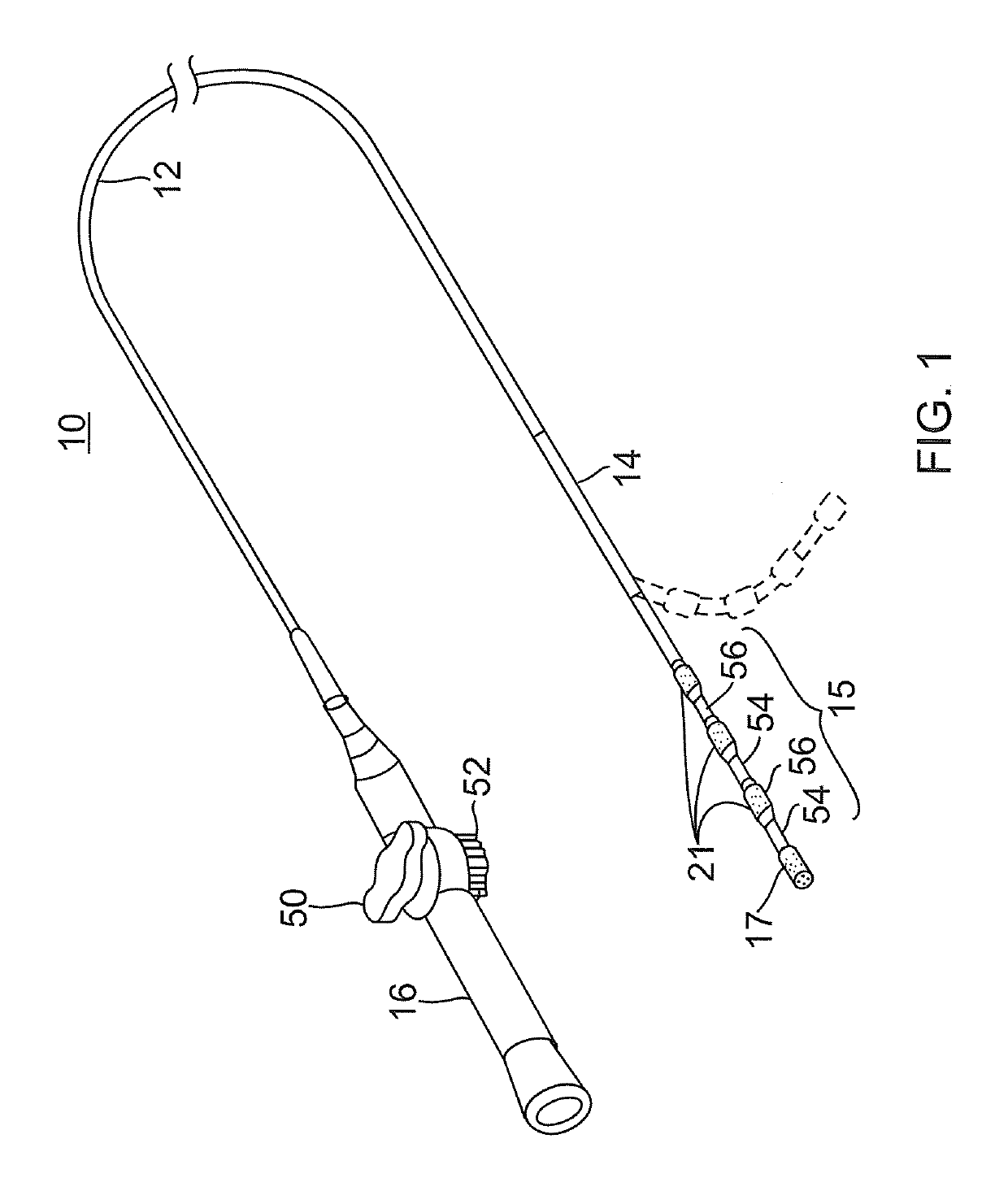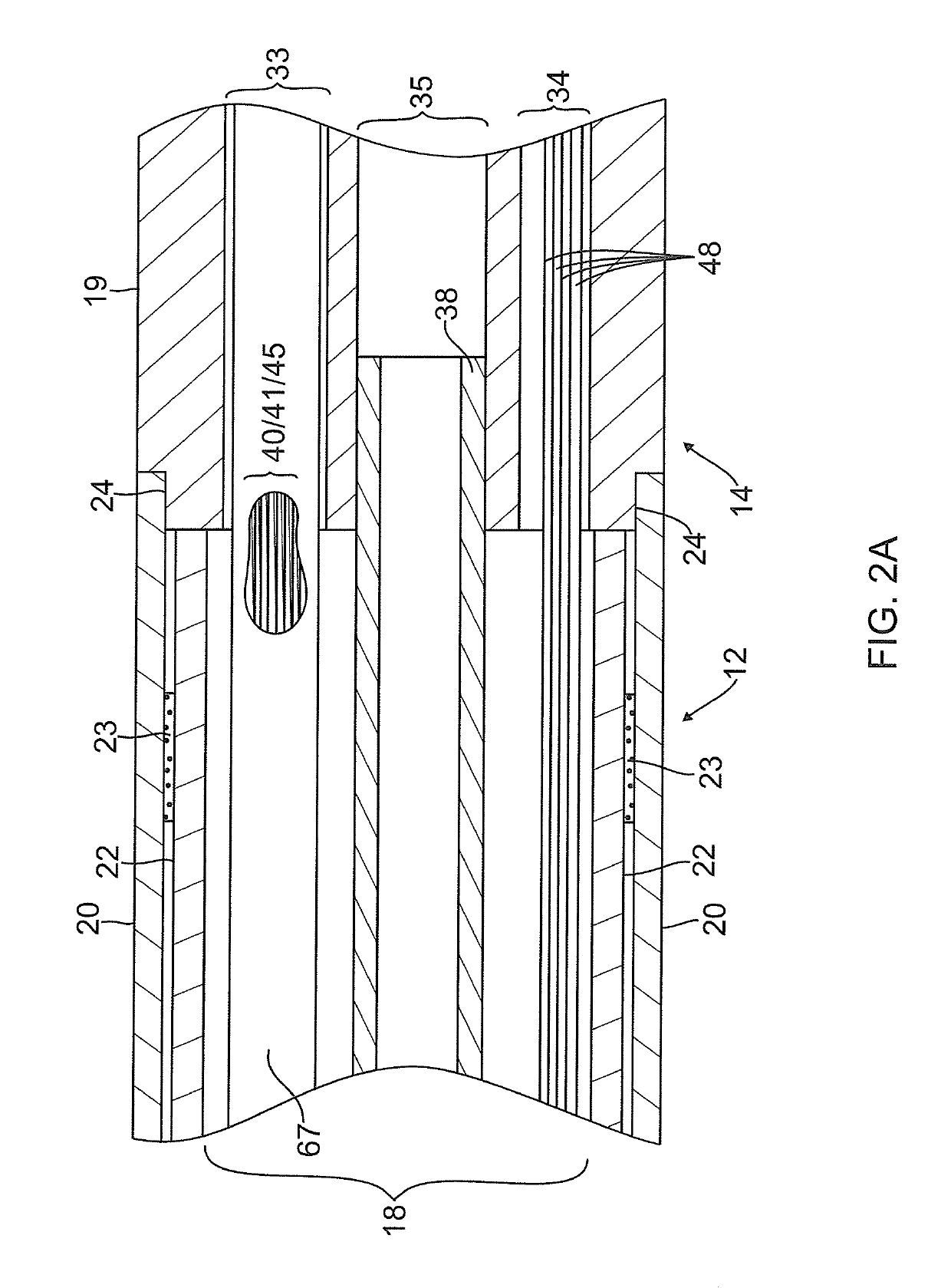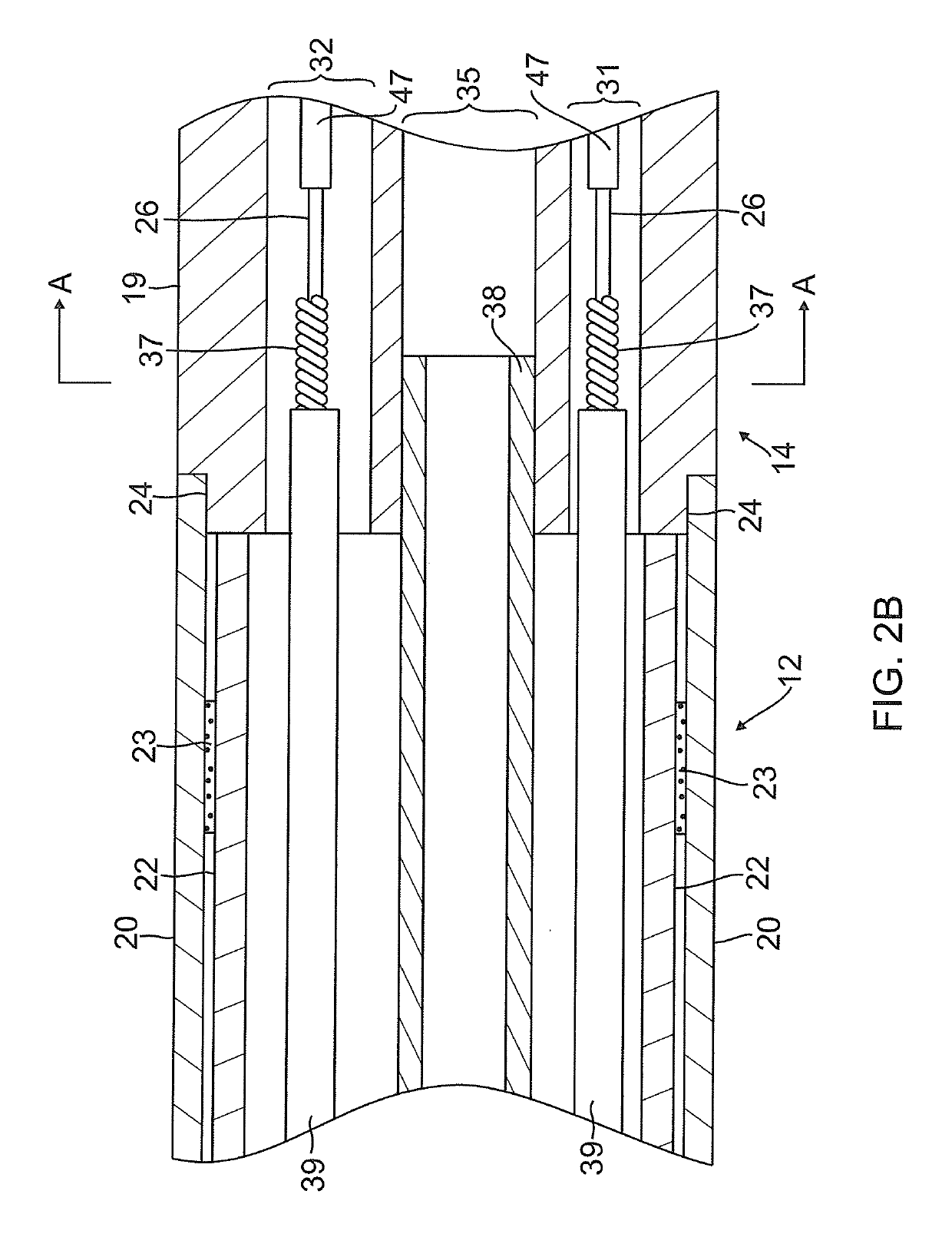Catheter having a distal section with spring sections for biased deflection
a catheter and distal tip technology, applied in the field of electrophysiological catheters, can solve the problems of reducing the accuracy of the position sensing capabilities of the sensor, limiting the flexibility and deflection of the distal tip section, and forming a lesion within the cardiac tissue which is electrically non-conductive, etc., to achieve the effect of reducing the axial loading capability, reducing the axial load, and ensuring the stability of the catheter
- Summary
- Abstract
- Description
- Claims
- Application Information
AI Technical Summary
Benefits of technology
Problems solved by technology
Method used
Image
Examples
Embodiment Construction
[0042]FIG. 1 illustrates an embodiment of a catheter 10 carrying irrigated tip and ring electrodes with improved deflection characteristics. The catheter has an elongated catheter body 12 with proximal and distal ends, an intermediate deflectable section 14 at the distal end of the catheter body 12, and a distal section 15 which carries an irrigated tip electrode 17 and a plurality of irrigated ring electrodes 21. The catheter also includes a control handle 16 at the proximal end of the catheter body 12 for controlling deflection of at least the intermediate section 14. Advantageously, the distal section 15 has a spring member that enables a more controlled and biased deflection, including uni- or bi-directional deflection within a single plane. Along its length, the spring member houses discrete support members, each of which supports a respective ring electrode while allowing the spring member as a whole to deflect more predictably in enabling better contact between the tissue and...
PUM
| Property | Measurement | Unit |
|---|---|---|
| temperature | aaaaa | aaaaa |
| inner diameter | aaaaa | aaaaa |
| inner diameter | aaaaa | aaaaa |
Abstract
Description
Claims
Application Information
 Login to View More
Login to View More - R&D
- Intellectual Property
- Life Sciences
- Materials
- Tech Scout
- Unparalleled Data Quality
- Higher Quality Content
- 60% Fewer Hallucinations
Browse by: Latest US Patents, China's latest patents, Technical Efficacy Thesaurus, Application Domain, Technology Topic, Popular Technical Reports.
© 2025 PatSnap. All rights reserved.Legal|Privacy policy|Modern Slavery Act Transparency Statement|Sitemap|About US| Contact US: help@patsnap.com



